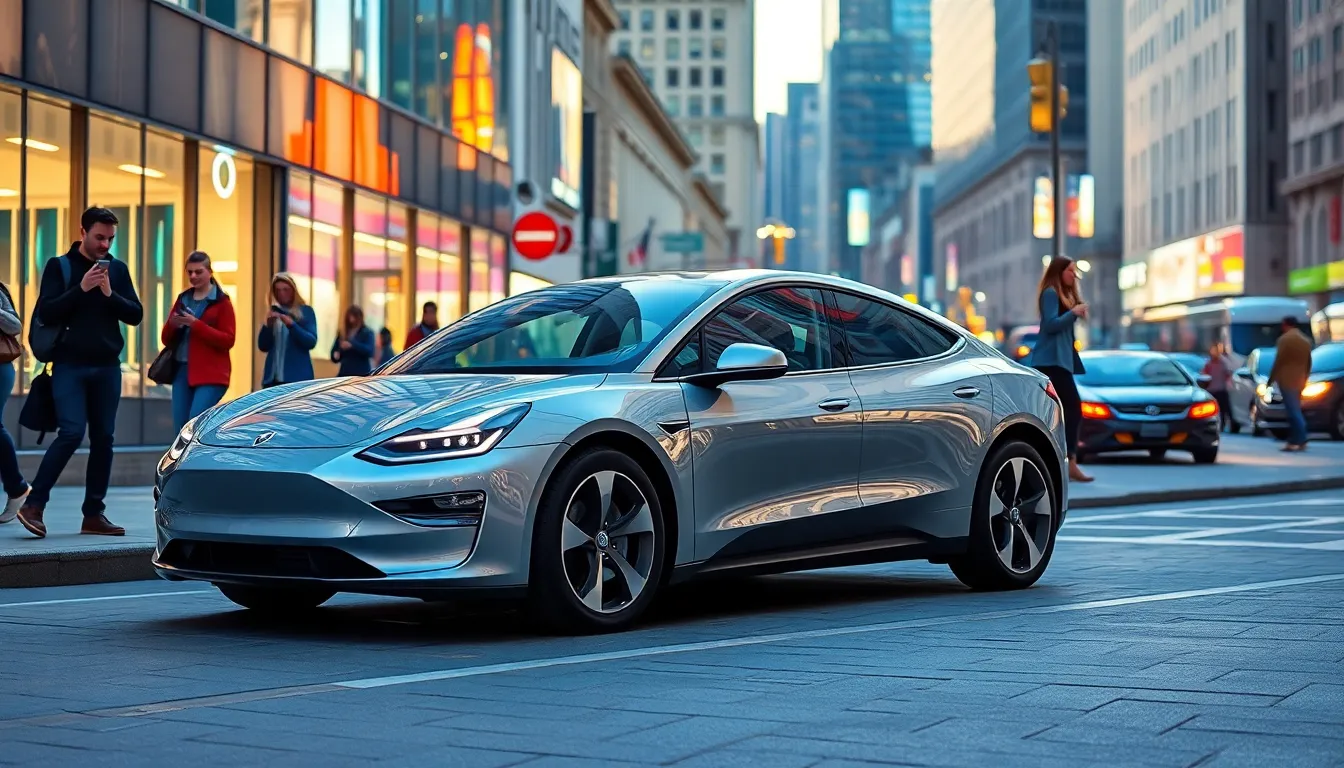We’re living in the most exciting era of automotive innovation since Henry Ford revolutionized manufacturing over a century ago. Today’s modern cars aren’t just transportation—they’re sophisticated computers on wheels that seamlessly blend cutting-edge technology with environmental consciousness.
From electric powertrains that deliver instant torque to autonomous driving features that make our daily commutes safer, modern vehicles have transformed how we think about mobility. We’re witnessing manufacturers push boundaries with advanced materials, AI-powered safety systems, and connectivity features that turn every journey into a connected experience.
Whether you’re considering your next vehicle purchase or simply curious about automotive trends, understanding what makes modern cars special will help you navigate this rapidly evolving industry. Let’s explore how today’s automobiles are reshaping our industry and what these innovations mean for drivers everywhere.
Revolutionary Safety Features That Define Modern Cars
Modern vehicles integrate cutting-edge safety technologies that actively prevent accidents rather than simply protecting occupants during crashes. These innovations represent the most important advancement in automotive safety since the introduction of seatbelts and airbags.
Advanced Driver Assistance Systems (ADAS)
Lane departure warning systems monitor road markings using cameras mounted behind the windshield, alerting drivers when they drift from their lane without signaling. Studies show these systems reduce lane departure crashes by up to 11% according to the Insurance Institute for Highway Safety.
Adaptive cruise control maintains safe following distances by automatically adjusting vehicle speed based on traffic conditions ahead. The system uses radar sensors to detect slower vehicles and can bring cars to a complete stop in heavy traffic situations.
Blind spot monitoring employs radar sensors in the rear bumper to detect vehicles in adjacent lanes that mirrors can’t reveal. Warning lights illuminate on side mirrors when changing lanes becomes unsafe, reducing side-swipe accidents by approximately 14%.
Automatic emergency braking activates when sensors detect an imminent collision, applying maximum braking force even if drivers don’t respond quickly enough. This technology prevents rear-end collisions in 50% of cases where it activates.
Collision Avoidance Technology
Forward collision warning systems use cameras and radar to calculate closing speeds with vehicles ahead, providing audio and visual alerts when crash risk increases. These systems give drivers crucial extra seconds to react in emergency situations.
Cross traffic alert technology scans for approaching vehicles when backing out of parking spaces or driveways. Sensors detect movement from both directions, warning drivers of potential collisions they cannot see.
Pedestrian detection systems combine camera and radar data to identify people crossing streets or walking near vehicles. Advanced versions can distinguish between adults, children, and cyclists, automatically applying brakes when impact seems unavoidable.
360-degree camera systems create bird’s eye views around vehicles using multiple cameras, eliminating blind spots during parking and low-speed maneuvering. The technology stitches together real-time images to show obstacles that traditional mirrors miss.
Smart Airbag Systems
Multi-stage airbags deploy with varying force levels based on crash severity, occupant size, and seatbelt usage detected by sensors throughout the vehicle. This customization reduces airbag-related injuries while maintaining protection effectiveness.
Side-impact airbags protect occupants during T-bone collisions by deploying from seats or door panels within milliseconds of impact detection. Modern versions include head protection curtains that extend along entire window areas.
Knee airbags prevent lower leg injuries by cushioning the area between front seats and dashboard during frontal crashes. These supplemental airbags work alongside traditional chest-level airbags to distribute impact forces more evenly.
Smart occupant detection uses weight sensors and seat position monitors to determine optimal airbag deployment patterns for each seating position. The system can deactivate airbags when child safety seats are detected or seats remain empty.
Cutting-Edge Technology Integration in Today’s Modern Cars
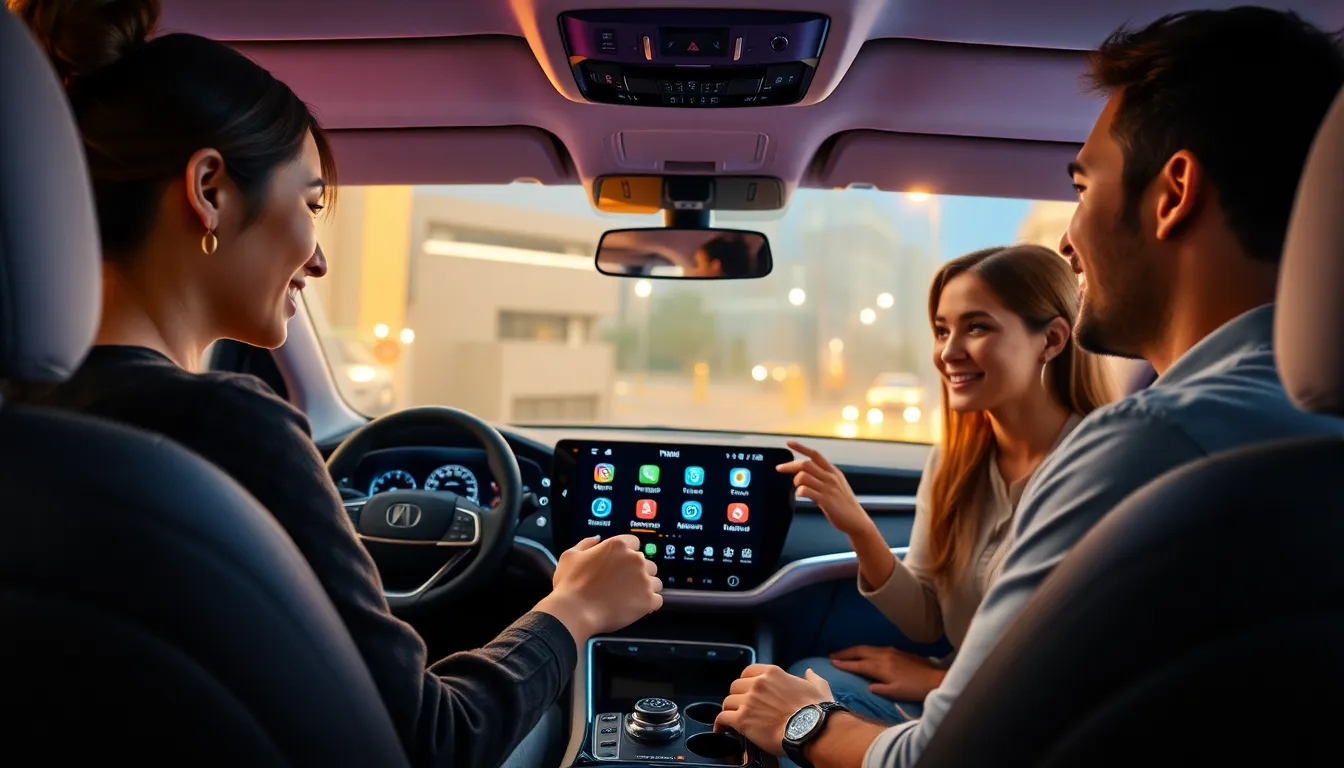
Modern vehicles transform into mobile command centers through sophisticated digital ecosystems. Technology integration extends far beyond traditional automotive functions to create seamless connections between drivers and their digital lives.
Infotainment and Connectivity Answers
Infotainment systems serve as the central hub for entertainment, navigation, and vehicle controls in today’s cars. Large touchscreen displays ranging from 8 to 17 inches dominate dashboards, providing intuitive access to multimedia content, GPS navigation, and vehicle settings. Apple CarPlay and Android Auto integration allows drivers to mirror smartphone functions directly onto their car’s display, enabling hands-free texting, music streaming, and app usage.
Wireless connectivity features include built-in Wi-Fi hotspots that support up to 8 connected devices, transforming vehicles into mobile internet zones. Premium sound systems from brands like Bang & Olufsen, Bose, and Harman Kardon deliver concert-quality audio through strategically placed speakers throughout the cabin. Real-time traffic updates and cloud-based navigation systems provide ever-changing route optimization, helping drivers avoid congestion and reduce travel time by up to 25%.
Voice Recognition and AI Assistants
Voice recognition technology revolutionizes how we interact with our vehicles through natural language processing capabilities. Advanced systems like Mercedes-Benz’s MBUX, BMW’s Intelligent Personal Assistant, and Audi’s Virtual Cockpit respond to conversational commands rather than requiring exact phrases. Drivers can adjust climate controls, select music, make phone calls, and set navigation destinations using simple voice commands.
AI assistants learn individual preferences and driving patterns to provide personalized recommendations and proactive suggestions. Machine learning algorithms analyze driver behavior to optimize seat positions, mirror angles, and preferred routes automatically. Natural language understanding allows these systems to process complex requests like “Find a gas station with good coffee near my route” or “Schedule a service appointment for next Tuesday morning.”
Over-the-Air Software Updates
Over-the-air updates deliver continuous improvements and new features without requiring dealership visits. Tesla pioneered this technology, pushing regular updates that enhance performance, add new entertainment options, and improve safety features remotely. Traditional automakers like Ford, General Motors, and Volkswagen now carry out similar systems across their vehicle lineups.
Software updates can increase horsepower, improve fuel efficiency, and add entirely new capabilities to existing vehicles. BMW’s ConnectedDrive services enable features like remote engine start, vehicle location tracking, and stolen vehicle recovery through smartphone apps. Updates typically occur overnight while vehicles are parked, ensuring minimal disruption to daily driving routines. Security patches protect against cyber threats, while feature updates can add new infotainment options, driver assistance capabilities, and connectivity functions throughout a vehicle’s lifespan.
Environmental Innovations Shaping Modern Cars
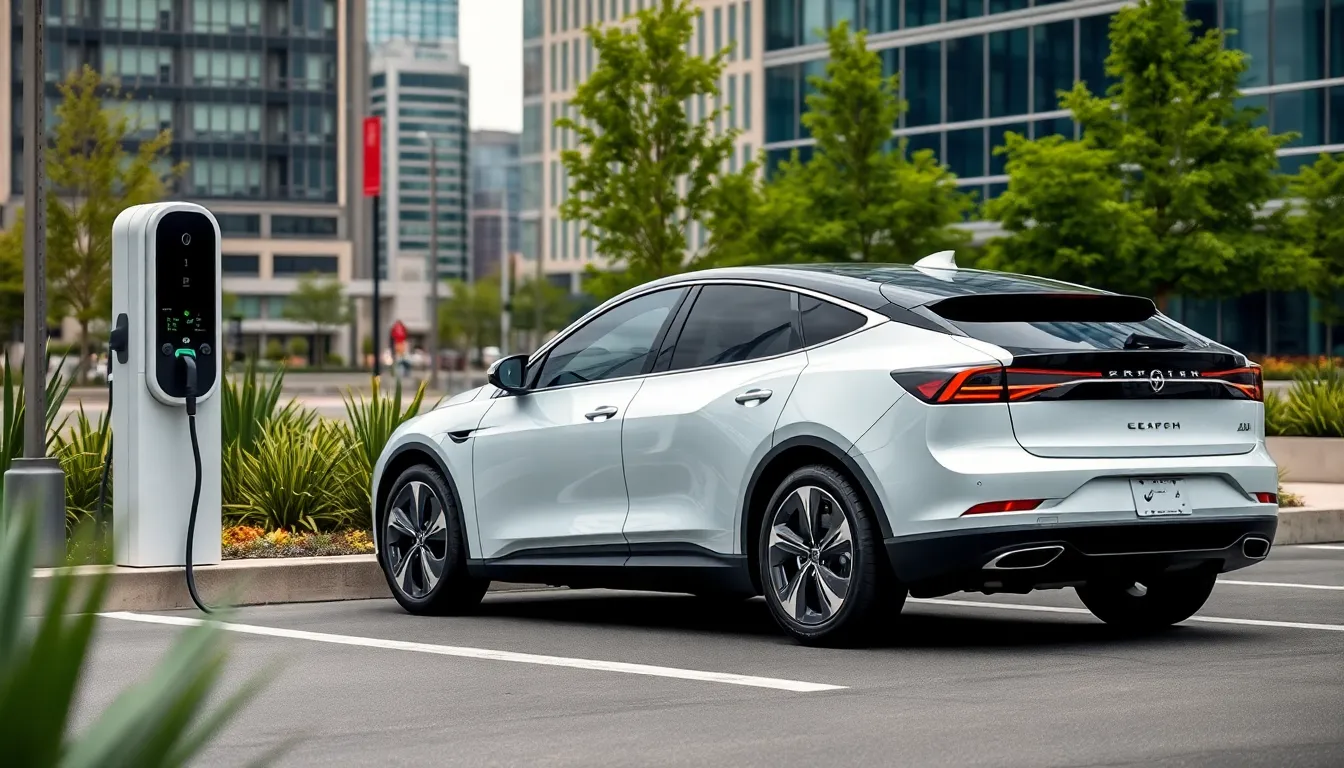
Modern automotive environmental innovations represent a fundamental shift from traditional manufacturing and propulsion methods. These groundbreaking technologies address climate concerns while maintaining performance standards that drivers expect.
Electric and Hybrid Powertrains
Electric powertrains eliminate tailpipe emissions entirely by replacing internal combustion engines with electric motors powered by lithium-ion batteries. Battery electric vehicles (BEVs) like the Tesla Model 3 and Ford Mustang Mach-E deliver instant torque while producing zero direct emissions. Charging infrastructure continues expanding rapidly with over 60,000 public charging stations now operating across the United States.
Hybrid systems combine gasoline engines with electric motors to achieve remarkable fuel efficiency improvements of 30-50% compared to conventional vehicles. Plug-in hybrid electric vehicles (PHEVs) such as the Toyota Prius Prime and BMW X5 xDrive45e offer electric-only driving for daily commutes while maintaining gasoline backup for longer trips. Regenerative braking technology captures energy typically lost during deceleration and stores it in the battery for later use.
Range anxiety concerns diminish as battery technology advances deliver 300+ mile ranges in vehicles like the Lucid Air Dream Range and BMW iX. Fast-charging capabilities now enable 10-80% battery charging in under 30 minutes at DC fast charging stations.
Sustainable Manufacturing Materials
Recycled plastics transform ocean waste and post-consumer materials into interior components including dashboard panels, seat fabrics, and floor mats. BMW’s i3 model incorporates renewable materials such as kenaf plant fibers and eucalyptus wood in its interior construction. Ford uses recycled plastic bottles to create seat cushions and carpeting in multiple vehicle models.
Bio-based materials replace petroleum-derived plastics with renewable alternatives made from soybeans, corn, and other agricultural products. These sustainable alternatives reduce manufacturing carbon footprints by up to 20% while maintaining durability standards. Natural fiber composites using flax, hemp, and jute provide strength comparable to traditional materials with significantly lower environmental impact.
Aluminum recycling programs enable automakers to reuse up to 95% of aluminum content from end-of-life vehicles. This process requires only 5% of the energy needed to produce new aluminum while maintaining identical performance characteristics. Closed-loop manufacturing systems ensure materials remain in the production cycle rather than entering waste streams.
Improved Fuel Efficiency Standards
Corporate Average Fuel Economy (CAFE) standards mandate fleet-wide efficiency improvements reaching 40.4 miles per gallon by 2026. Automakers invest billions in advanced engine technologies including direct injection, turbocharging, and variable valve timing to meet these requirements. Lightweight materials such as high-strength steel and carbon fiber reduce vehicle weight by 10-15% without compromising safety ratings.
Aerodynamic enhancements including active grille shutters, underbody panels, and optimized body shapes reduce drag coefficients to improve highway fuel economy. Modern vehicles achieve drag coefficients as low as 0.22 compared to 0.35 for vehicles from the 1990s. These improvements translate to fuel economy gains of 5-8% at highway speeds.
Engine stop-start systems automatically shut down engines during idle periods and restart them when acceleration is needed. This technology reduces fuel consumption by 3-5% in city driving conditions while operating transparently to drivers. Variable displacement engines deactivate cylinders during light load conditions to optimize fuel efficiency without sacrificing performance when power is needed.
Autonomous Driving Capabilities in Modern Cars
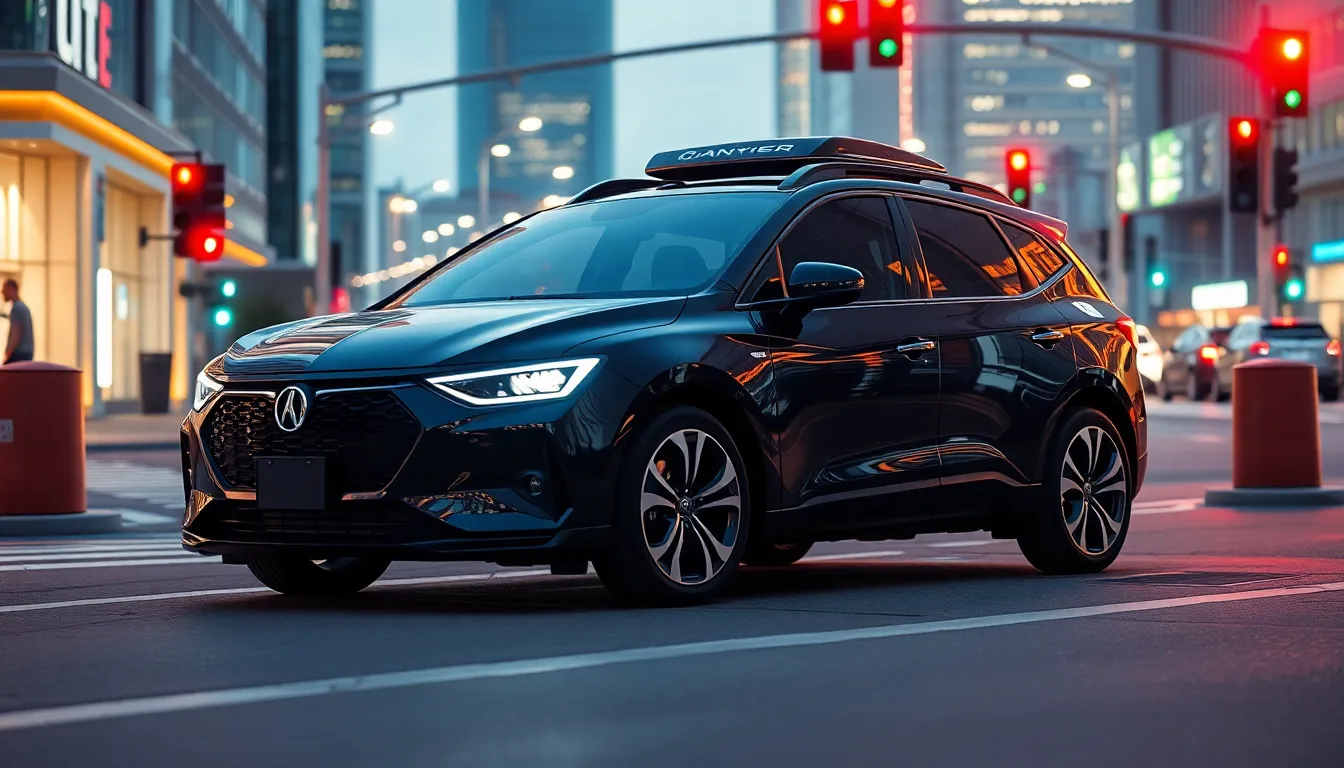
Modern vehicles continue evolving beyond connected ecosystems and environmental consciousness into the area of autonomous driving. We’re witnessing unprecedented advancement in self-driving technology that’s reshaping how we interact with our cars.
Levels of Automation Available Today
Level 0 automation represents traditional vehicles with no autonomous features, requiring complete driver control at all times. Level 1 systems provide single-function assistance like adaptive cruise control or lane-keeping assist, where drivers maintain primary responsibility for vehicle operation.
Level 2 automation combines multiple driver assistance features simultaneously, allowing cars to control both steering and acceleration under exact conditions. Tesla’s Autopilot, BMW’s Driving Assistant Professional, and Mercedes-Benz’s Drive Pilot exemplify this category, requiring constant driver attention and readiness to intervene.
Level 3 systems enable conditional automation where vehicles handle most driving tasks in defined scenarios while drivers must remain alert to resume control when requested. Audi’s Traffic Jam Pilot and Honda’s SENSING Elite represent early Level 3 implementations, primarily functioning in highway traffic situations.
Level 4 automation delivers high automation capability within exact geographic areas or conditions, eliminating the need for human intervention in those zones. Waymo’s robotaxi service and Cruise’s autonomous vehicles operate at this level in designated city areas.
Level 5 represents full automation with no human driver required under any conditions, though this technology remains in development phases across the automotive industry.
Self-Parking and Lane-Keeping Features
Automated parking systems use ultrasonic sensors, cameras, and advanced algorithms to identify suitable parking spaces and maneuver vehicles into position without driver input. BMW’s Parking Assistant Plus, Ford’s Active Park Assist, and Tesla’s Summon feature demonstrate varying approaches to hands-free parking capabilities.
Parallel parking assistance guides vehicles into tight spaces by controlling steering while drivers manage acceleration and braking. Mercedes-Benz’s PARKTRONIC and Volkswagen’s Park Assist systems can complete complex parallel and perpendicular parking maneuvers with minimal driver involvement.
Lane-keeping assist technology monitors road markings through forward-facing cameras and applies gentle steering corrections to maintain proper lane position. Systems from Toyota Safety Sense 2.0, Honda Sensing, and Nissan ProPILOT provide continuous lane centering on highways and city streets.
Lane departure warning systems alert drivers through visual, audible, or haptic feedback when vehicles begin drifting without turn signal activation. Advanced versions like GM’s Lane Keep Assist and Ford’s Lane-Keeping System actively steer vehicles back into their lanes when unintended departure occurs.
Remote parking features allow drivers to park or retrieve their vehicles using smartphone applications while standing outside the car. BMW’s Remote Control Parking and Hyundai’s Smart Park Assist enable users to navigate tight parking situations from external vantage points.
Future of Fully Autonomous Vehicles
Artificial intelligence advancement continues pushing autonomous vehicle capabilities toward Level 5 automation through machine learning algorithms that improve decision-making in complex traffic scenarios. Companies like Waymo, Tesla, and Cruise invest billions annually in AI development to achieve reliable full automation.
Sensor technology evolution incorporates LiDAR, radar, and high-resolution cameras working in combination to create comprehensive 360-degree environmental awareness. Next-generation sensor fusion systems will provide redundant safety measures and improved performance in adverse weather conditions.
Vehicle-to-everything communication enables cars to exchange data with traffic infrastructure, other vehicles, and pedestrian devices to enhance autonomous navigation safety. 5G connectivity will help real-time traffic optimization and collaborative autonomous driving behaviors across entire transportation networks.
Regulatory framework development shapes the timeline for widespread autonomous vehicle adoption as governments establish safety standards and liability frameworks. The National Highway Traffic Safety Administration and Department of Transportation continue updating guidelines for autonomous vehicle testing and deployment.
Manufacturing scalability remains crucial for making fully autonomous vehicles accessible to mainstream consumers beyond luxury market segments. Automotive manufacturers are developing cost-effective autonomous systems that can integrate into mid-range vehicle models without prohibitive price increases.
Enhanced Performance Features of Contemporary Modern Cars
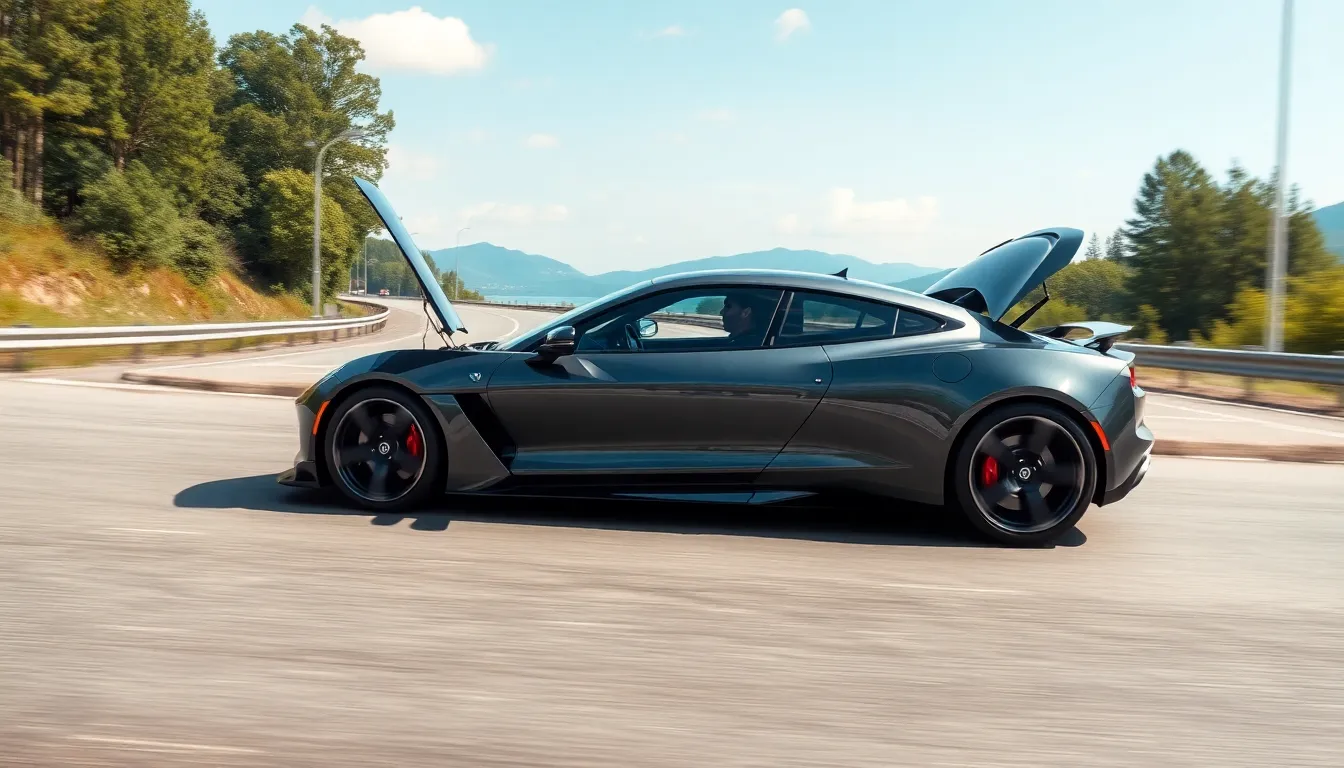
Modern cars deliver unprecedented performance through sophisticated engineering systems that maximize power while optimizing efficiency. We’ll explore the key technologies that make today’s vehicles faster, smoother, and more responsive than ever before.
Turbocharged and Efficient Engines
Turbocharged engines represent the pinnacle of modern automotive engineering, delivering exceptional power output from smaller displacement units. These systems use exhaust gases to spin a turbine that forces additional air into the combustion chamber, increasing power density by up to 40% compared to naturally aspirated engines of similar size.
Direct injection technology works alongside turbocharging to optimize fuel delivery with precision timing and atomization. Modern engines achieve thermal efficiency ratings exceeding 40%, with manufacturers like Toyota and Mercedes-Benz leading this efficiency revolution. Variable valve timing systems further enhance performance by adjusting intake and exhaust valve operation based on engine speed and load conditions.
Cylinder deactivation technology allows engines to shut down exact cylinders during light load conditions, reducing fuel consumption by 6-10% without compromising drivability. Advanced engine management systems monitor dozens of parameters in real time, adjusting fuel mixture, ignition timing, and boost pressure to maintain optimal performance across all driving conditions.
Advanced Transmission Systems
Continuously Variable Transmissions (CVT) eliminate traditional gear steps, providing seamless acceleration and improved fuel economy through infinite gear ratios. Modern CVT systems feature enhanced belt and pulley designs that handle higher torque loads while maintaining the smooth operation that defines this technology.
Dual clutch transmissions combine the efficiency of manual gearboxes with the convenience of automatic operation, delivering lightning fast gear changes in as little as 100 milliseconds. These systems use two separate clutches for odd and even gears, pre-selecting the next gear while the current one remains engaged for instantaneous shifts.
Ten speed automatic transmissions have become the new standard for performance vehicles, offering wider gear ratio spreads that keep engines operating in their optimal power bands. Ford’s 10R80 and GM’s 10L90 transmissions demonstrate how additional gears improve both acceleration and highway fuel economy.
Adaptive shift logic learns individual driving patterns and adjusts shift points accordingly, creating a personalized driving experience that matches driver preferences. These intelligent systems consider factors like throttle input, vehicle load, and road grade to optimize transmission behavior in real time.
Adaptive Suspension Technology
Electronically controlled dampers adjust compression and rebound settings thousands of times per second, providing optimal ride quality and handling characteristics for varying road conditions. These systems use magnetorheological fluids or electronic valves to modify damping force instantaneously based on sensor inputs.
Air suspension systems offer variable ride height adjustment, lowering vehicles at highway speeds for improved aerodynamics and raising them for off road clearance. Luxury vehicles like the Mercedes-Benz S-Class and Range Rover demonstrate how air springs provide both comfort and capability through computer controlled pressure adjustments.
Active anti roll bars counteract body roll during cornering by applying opposing forces through electric or hydraulic actuators. BMW’s Ever-changing Drive system and Audi’s adaptive air suspension showcase how active stabilizer technology enhances handling without compromising ride comfort on straight roads.
Predictive suspension systems use forward facing cameras to scan road surfaces ahead, pre-adjusting damper settings before wheels encounter bumps or imperfections. This proactive approach to suspension control represents the cutting edge of ride quality technology, preparing the vehicle for road irregularities before they affect passenger comfort.
Smart Connectivity Options Available in Modern Cars
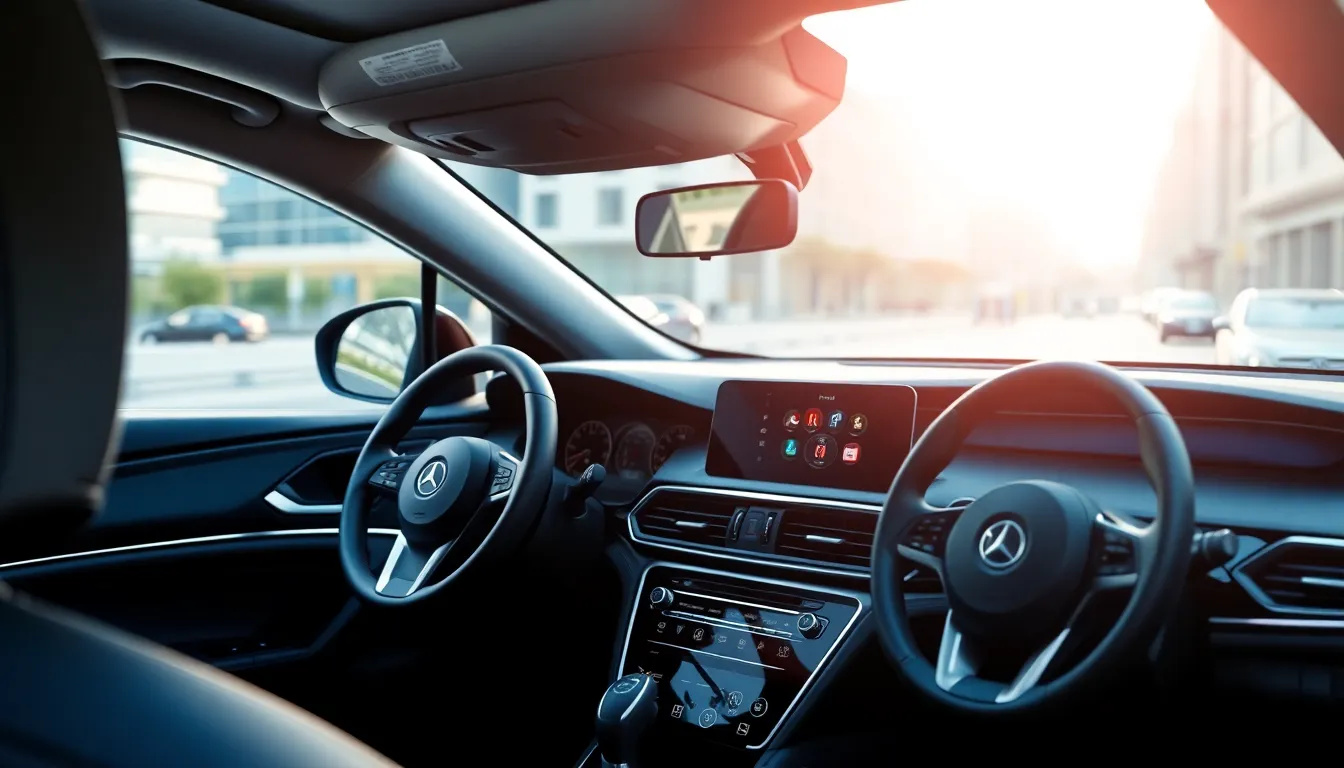
Modern cars now feature sophisticated connectivity systems that seamlessly integrate with our digital lives. These smart technologies transform vehicles into connected command centers that enhance convenience, safety, and entertainment.
Smartphone Integration Platforms
Apple CarPlay and Android Auto dominate the smartphone integration industry in today’s vehicles. We can mirror our phone’s interface directly onto the car’s touchscreen, accessing familiar apps like Maps, Spotify, and Messages through the vehicle’s display. Most automakers now offer these platforms as standard equipment across their model lineups.
Wireless versions of these platforms eliminate the need for cables entirely. BMW, Mercedes-Benz, and Audi lead the way with wireless CarPlay and Android Auto in many of their 2024 models. We simply enter our vehicle, and our smartphone automatically connects to the infotainment system.
Custom manufacturer platforms like Ford’s SYNC 4A and GM’s infotainment system provide additional functionality beyond standard smartphone mirroring. These systems offer native navigation, voice commands, and vehicle-exact controls while maintaining compatibility with our mobile devices.
Wireless Charging and Connectivity
Qi wireless charging pads have become standard in premium vehicles and increasingly common in mainstream models. We place our compatible smartphone on the charging pad, typically located in the center console, and it charges automatically without cables. Toyota, Honda, and Nissan now include wireless charging in many of their mid-range vehicles.
Built-in Wi-Fi hotspots transform our cars into mobile internet hubs capable of connecting up to eight devices simultaneously. General Motors’ OnStar, Ford’s FordPass Connect, and similar services provide 4G LTE connectivity with data plans starting around $20 per month. Passengers can stream videos, work remotely, or browse the internet during long trips.
Bluetooth connectivity extends beyond simple audio streaming to include multiple device pairing and profile management. Modern systems remember our preferences for different paired devices and automatically switch between them based on proximity and usage patterns.
Remote Vehicle Monitoring
Smartphone apps from manufacturers allow us to monitor and control our vehicles from anywhere with cellular coverage. We can check fuel levels, battery status, door locks, and engine status through apps like MyChevrolet, FordPass, and BMW ConnectedDrive. These apps typically update vehicle information every 15-30 minutes when the car is parked.
Remote start and climate control features let us warm up or cool down our vehicles before we reach them. Tesla’s app leads this category, allowing us to set cabin temperature, open windows, and even move the car remotely using Summon mode. Traditional automakers like Subaru and Hyundai offer similar capabilities through their mobile applications.
Theft protection and tracking services provide real-time location data and security alerts when our vehicles are moved without authorization. OnStar, Mercedes me connect, and similar services can locate stolen vehicles and assist law enforcement in recovery efforts. These systems typically cost $15-25 monthly but provide valuable peace of mind for vehicle security.
Design Evolution and Aesthetics of Modern Cars
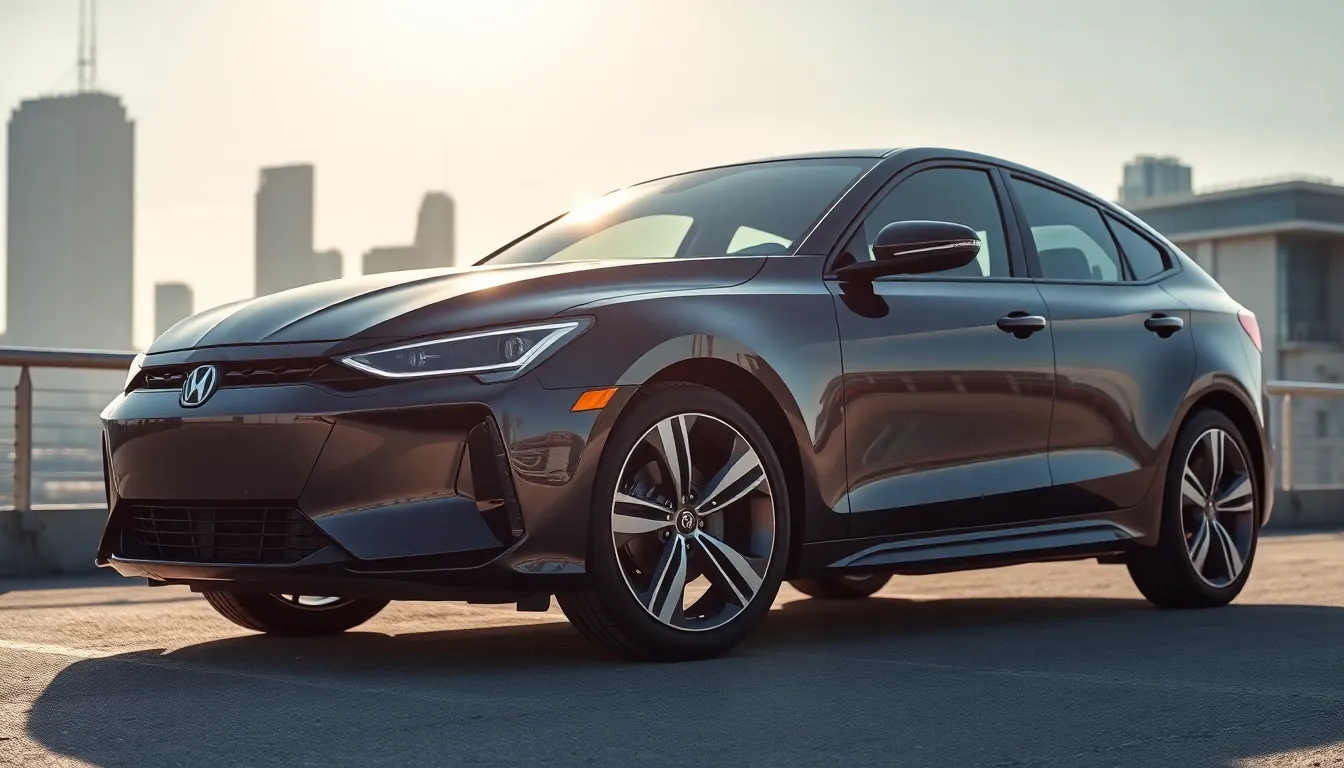
Modern cars have transformed dramatically from purely functional machines into sophisticated design statements that blend form with function. Contemporary automotive aesthetics reflect advanced engineering principles while prioritizing efficiency and user experience.
Aerodynamic Improvements for Efficiency
Aerodynamic design has become a cornerstone of modern vehicle development, directly impacting fuel economy and electric vehicle range. We’re seeing manufacturers carry out active grille shutters that automatically close at highway speeds to reduce drag, improving efficiency by up to 3% in many vehicles. Tesla’s Model S achieves an impressive 0.208 drag coefficient through carefully sculpted body panels and flush door handles that retract when not in use.
Wind tunnel testing now guides every exterior design decision, from the slope of windshields to the placement of side mirrors. Modern cars feature underbody panels that smooth airflow beneath the vehicle, reducing turbulence that traditionally created drag. BMW’s i4 electric sedan incorporates aerodynamic wheels and specialized tire designs that further enhance airflow management.
Active aerodynamic components are becoming standard features in performance and luxury vehicles. Mercedes-Benz AMG GT includes deployable rear spoilers that adjust based on speed and driving conditions, optimizing downforce for stability while minimizing drag during cruising. We’ve observed that these design innovations can improve range by 15-20% in electric vehicles while reducing wind noise significantly.
LED Lighting and Digital Displays
LED technology has revolutionized automotive lighting design, enabling more precise illumination patterns and distinctive visual signatures. We’re witnessing manufacturers create unique daytime running light configurations that serve as brand identifiers from important distances. Audi’s Matrix LED headlights can selectively dim individual segments to avoid blinding oncoming drivers while maintaining optimal road illumination.
Adaptive headlight systems now adjust beam patterns based on steering input, vehicle speed, and GPS data about upcoming curves. BMW’s Laserlight technology projects light up to 2,000 feet ahead, doubling the range of traditional LED systems. Interior ambient lighting systems offer millions of color combinations, allowing drivers to customize their cabin atmosphere through smartphone apps.
Digital display integration has transformed traditional dashboard layouts into customizable information centers. Mercedes-Benz’s Hyperscreen spans the entire dashboard width with three seamlessly integrated displays totaling 56 inches of screen real estate. Tesla’s minimalist approach consolidates all vehicle functions into a single 17-inch touchscreen, demonstrating how digital interfaces can simplify complex control systems.
Heads-up display technology projects critical driving information directly onto the windshield, reducing driver distraction by keeping eyes focused on the road. Augmented reality windshields overlay navigation arrows directly onto actual road surfaces, making turn-by-turn directions more intuitive than traditional map displays.
Customizable Interior Experiences
Interior personalization has reached unprecedented levels through digital configuration systems and modular design approaches. We’re seeing luxury manufacturers offer hundreds of material combinations, from sustainably sourced wood veneers to recycled ocean plastic trim pieces. BMW’s Individual program allows customers to specify unique color combinations and materials that reflect personal preferences.
Seat configurations now adapt to multiple users through memory systems that store preferred positions, climate settings, and mirror adjustments. Genesis GV70 features biometric recognition that automatically adjusts seat position, steering wheel height, and preferred temperature settings when exact drivers enter the vehicle. Massage functions and ventilated surfaces enhance comfort during long journeys.
Ambient lighting systems respond to music tempo, driving modes, and time of day to create immersive cabin experiences. Rolls-Royce’s Starlight Headliner incorporates hundreds of fiber optic lights that mimic constellations, demonstrating how luxury brands push aesthetic boundaries. Sound system customization allows drivers to adjust acoustic profiles based on seating positions and music preferences.
Digital instrument clusters display personalized information layouts that drivers can modify through steering wheel controls or voice commands. Porsche’s Sport Chrono package includes performance timers and lap tracking features that serious driving enthusiasts can access directly from the dashboard. These customization options transform vehicles into personal spaces that reflect individual lifestyles and preferences.
Cost Considerations When Buying Modern Cars
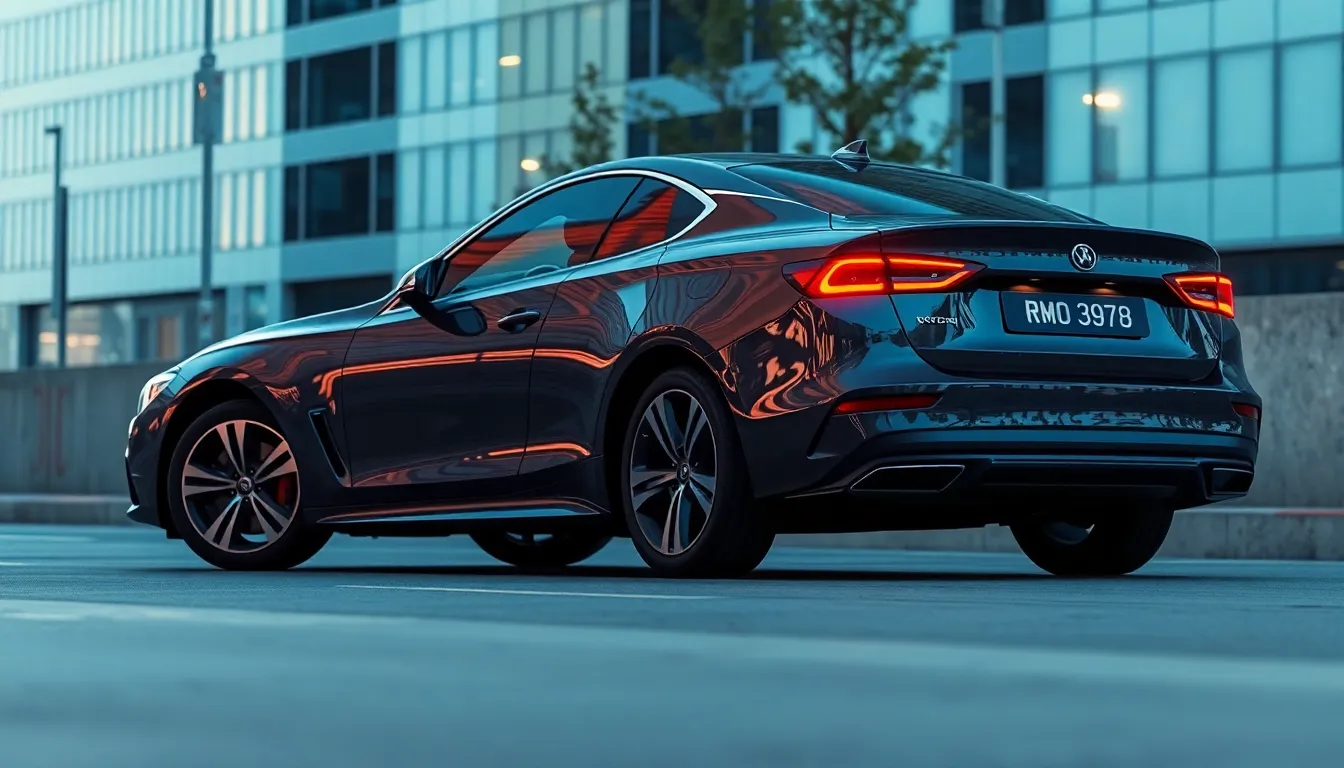
Understanding the financial implications of purchasing a modern car extends beyond the sticker price. Advanced technologies and sophisticated systems significantly impact both upfront costs and long-term ownership expenses.
Initial Purchase Price Factors
Technology packages drive modern car pricing to new heights. Advanced driver assistance systems like Tesla’s Autopilot add $8,000 to the base price, while BMW’s Driving Assistant Professional costs an additional $1,700. Premium infotainment systems with large touchscreen displays increase vehicle costs by $2,000 to $5,000 depending on the manufacturer.
Electric powertrains command substantial price premiums over traditional engines. A Tesla Model 3 starts at $38,990 compared to similar-sized gasoline sedans priced around $25,000. But, federal tax credits up to $7,500 reduce the effective purchase price for qualifying electric vehicles.
Luxury materials and personalization options significantly inflate final pricing. Mercedes-Benz offers interior customization packages ranging from $3,000 to $15,000, while Audi’s premium leather and trim combinations add $4,000 to $8,000. Aerodynamic enhancement packages with active grille shutters typically cost $1,500 to $3,000 across luxury brands.
Maintenance and Technology Costs
Software updates and connectivity features create ongoing subscription expenses. BMW charges $80 annually for Apple CarPlay after the first year, while Mercedes-Benz’s remote services cost $200 per year. Over-the-air update capabilities require cellular data plans averaging $25 monthly for premium connectivity features.
Advanced safety systems demand specialized maintenance and calibration services. Camera and sensor cleaning for autonomous driving features costs $150 to $300 per service visit. Radar system recalibration after windshield replacement ranges from $500 to $1,200 depending on the vehicle’s complexity.
Electric vehicle maintenance differs substantially from traditional cars. Battery pack replacements cost $10,000 to $20,000 but rarely occur within warranty periods. Regenerative braking systems reduce brake pad replacement frequency by 50% to 70%, saving $300 to $500 per service cycle.
Long-term Value and Depreciation
Technology integration affects depreciation rates across different vehicle segments. Luxury cars with advanced infotainment systems retain 45% to 55% of their value after three years, while vehicles with basic technology packages drop to 35% to 40% residual value. Electric vehicles experience 60% depreciation in their first three years due to rapid technological advancement.
Autonomous driving capabilities influence resale market dynamics significantly. Vehicles with Level 2 automation features maintain higher resale values, depreciating 5% to 10% less than comparable models without these systems. Tesla Model S vehicles with Full Self-Driving capability retain $8,000 to $12,000 more value than standard versions.
Connectivity and over-the-air update capability preserve long-term relevance. Cars with wireless update capabilities depreciate 15% slower than vehicles requiring dealership visits for software improvements. Built-in Wi-Fi hotspots and smartphone integration platforms add $2,000 to $4,000 in residual value after five years of ownership.
Conclusion
We’re witnessing a groundbreaking period where cars have become sophisticated technological platforms that redefine our relationship with transportation. These innovations aren’t just about getting from point A to point B anymore – they’re about creating safer more efficient and more connected experiences.
The integration of advanced safety systems electric powertrains and smart connectivity features represents just the beginning of this automotive revolution. As autonomous driving capabilities continue to develop and environmental considerations drive further innovation we can expect even more groundbreaking changes.
Whether you’re considering your next vehicle purchase or simply fascinated by automotive technology understanding these developments helps us appreciate how far we’ve come and where we’re headed in the industry of modern transportation.
Frequently Asked Questions
What are the main technological advances in modern cars?
Modern cars feature electric powertrains, autonomous driving systems, AI-powered safety features, advanced infotainment systems, and over-the-air software updates. These technologies transform vehicles into sophisticated mobile command centers with enhanced connectivity, safety, and performance capabilities that continuously improve through software updates.
How do Advanced Driver Assistance Systems (ADAS) improve safety?
ADAS technologies like lane departure warnings, adaptive cruise control, and blind spot monitoring actively prevent accidents by alerting drivers to potential hazards. These systems work alongside collision avoidance technologies and smart airbag systems to significantly reduce accident risks and enhance occupant protection.
What are the different levels of autonomous driving?
Autonomous driving ranges from Level 0 (no automation) to Level 5 (full automation). Level 1-2 includes features like adaptive cruise control, Level 3 offers conditional automation like Audi’s Traffic Jam Pilot, Level 4 provides high automation like Waymo’s robotaxis, while Level 5 represents complete self-driving capability.
How do electric vehicles address environmental concerns?
Electric vehicles eliminate tailpipe emissions and reduce carbon footprints. Combined with expanding charging infrastructure, improved battery technology, and sustainable manufacturing materials like recycled plastics, EVs represent the automotive industry’s commitment to environmental responsibility while maintaining performance standards.
What connectivity features are available in modern cars?
Modern cars offer Apple CarPlay, Android Auto, built-in Wi-Fi hotspots, wireless charging, and remote vehicle monitoring through smartphone apps. These features transform vehicles into connected command centers, providing entertainment, navigation, climate control, and security functions accessible from anywhere.
How do modern performance features enhance the driving experience?
Contemporary cars feature turbocharged engines, direct injection technology, advanced transmission systems like CVT and dual-clutch, adaptive suspension, and predictive suspension systems. These innovations deliver exceptional power, improved fuel efficiency, and responsive handling while optimizing comfort and performance.
What should I consider when buying a modern car financially?
Consider upfront costs for advanced technologies, long-term maintenance expenses, technology subscription fees, and depreciation rates. Vehicles with advanced systems typically retain higher resale values but may have higher initial purchase prices and ongoing technology-related costs throughout ownership.
How do infotainment systems work in modern vehicles?
Modern infotainment systems serve as central hubs featuring large touchscreen displays, smartphone integration, voice recognition, and AI assistants. They control entertainment, navigation, and vehicle functions while offering personalization based on individual preferences and natural language interaction capabilities.
What environmental innovations are shaping modern automotive manufacturing?
Automakers are implementing sustainable materials like recycled plastics and bio-based alternatives, improving fuel efficiency standards, using lightweight materials, and enhancing aerodynamic designs. These innovations reduce the industry’s carbon footprint while meeting stricter environmental regulations and consumer demands.
How has automotive design evolved in modern cars?
Modern automotive design combines aerodynamic improvements with aesthetic appeal, featuring LED lighting, digital displays, customizable interiors, and personalization options. Manufacturers focus on reducing drag for efficiency while offering luxury materials and ambient lighting to create immersive, personalized cabin environments.

